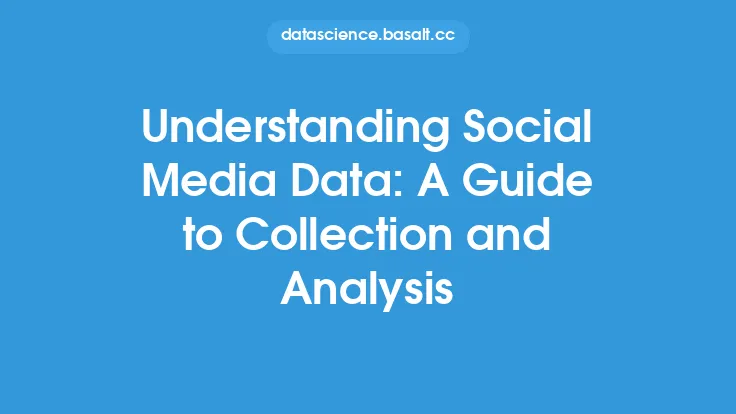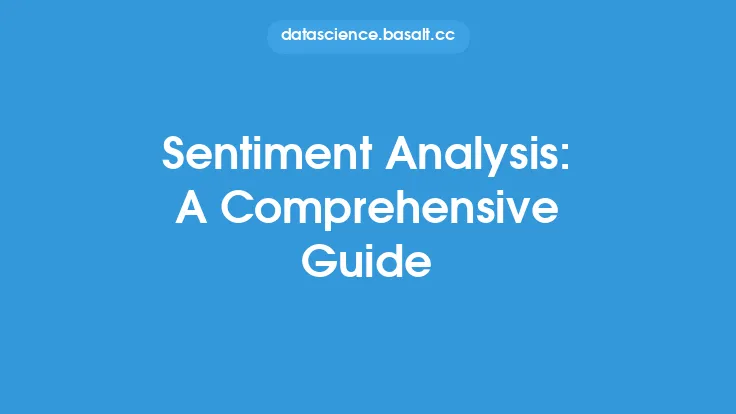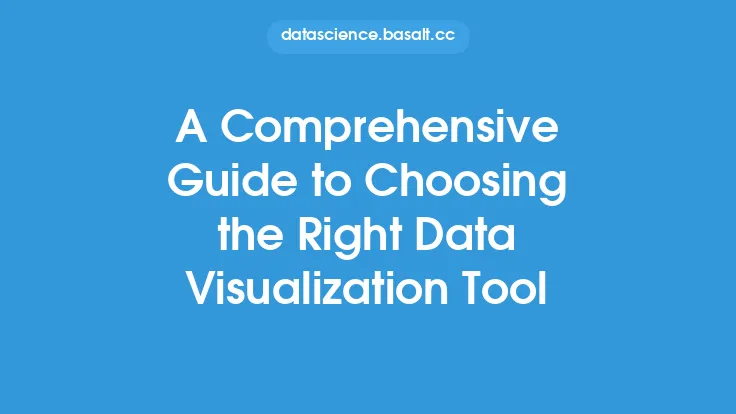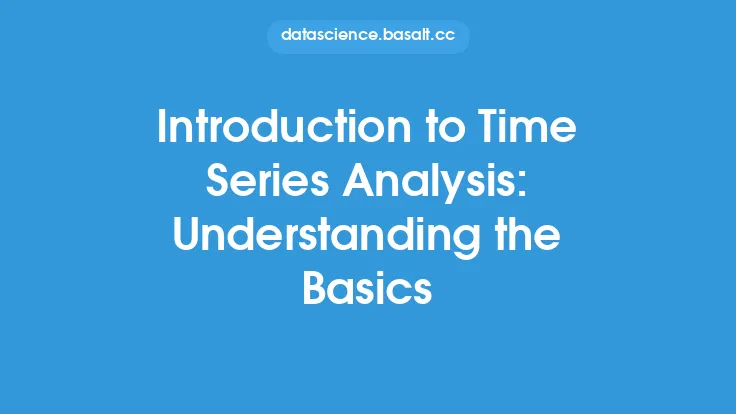Time series analysis is a crucial aspect of statistics, and Python has become an essential tool for performing this type of analysis. With its extensive range of libraries and tools, Python provides a comprehensive platform for time series analysis, making it easier to extract insights and meaningful patterns from time-stamped data. In this article, we will delve into the world of time series analysis with Python, exploring the key concepts, techniques, and tools used in this field.
Introduction to Time Series Analysis with Python
Python's popularity in time series analysis can be attributed to its simplicity, flexibility, and the availability of various libraries, including Pandas, NumPy, and Statsmodels. These libraries provide efficient data structures and algorithms for handling and analyzing time series data. Pandas, in particular, offers powerful data manipulation and analysis tools, including data frames and series, which are essential for time series analysis. Additionally, Python's extensive community and documentation make it an ideal choice for both beginners and experienced practitioners.
Preprocessing Time Series Data
Preprocessing is a critical step in time series analysis, as it ensures that the data is clean, consistent, and suitable for analysis. Python provides various tools and techniques for preprocessing time series data, including handling missing values, removing outliers, and normalizing data. The Pandas library offers several functions for handling missing values, such as `dropna()` and `fillna()`, which can be used to remove or replace missing values. Additionally, the `scipy` library provides functions for outlier detection and removal, such as `scipy.stats.zscore()`.
Time Series Feature Engineering
Feature engineering is the process of extracting relevant features from time series data, which can be used to improve the accuracy of models and forecasts. Python provides various techniques for feature engineering, including time domain features, frequency domain features, and spectral features. Time domain features, such as mean, variance, and autocorrelation, can be calculated using the Pandas library. Frequency domain features, such as spectral power and phase, can be calculated using the `scipy` library. Spectral features, such as wavelet coefficients, can be calculated using the `pywt` library.
Time Series Modeling with Python
Time series modeling is a critical aspect of time series analysis, as it enables the forecasting of future values and the identification of patterns and trends. Python provides various libraries and tools for time series modeling, including ARIMA, SARIMA, and LSTM models. The Statsmodels library provides an implementation of ARIMA and SARIMA models, which can be used to forecast future values. The Keras library provides an implementation of LSTM models, which can be used to forecast future values and identify patterns and trends.
Evaluating Time Series Models
Evaluating the performance of time series models is crucial to ensure that the models are accurate and reliable. Python provides various metrics and techniques for evaluating time series models, including mean absolute error (MAE), mean squared error (MSE), and mean absolute percentage error (MAPE). The `sklearn` library provides functions for calculating these metrics, which can be used to evaluate the performance of time series models. Additionally, the `statsmodels` library provides functions for calculating metrics such as Akaike information criterion (AIC) and Bayesian information criterion (BIC), which can be used to compare the performance of different models.
Advanced Time Series Topics
Python also provides various tools and techniques for advanced time series topics, such as multivariate time series analysis, time series clustering, and time series anomaly detection. The `statsmodels` library provides functions for multivariate time series analysis, including vector autoregression (VAR) and vector error correction (VEC) models. The `scikit-learn` library provides functions for time series clustering, including k-means and hierarchical clustering. The `pyod` library provides functions for time series anomaly detection, including statistical and machine learning-based methods.
Real-World Applications of Time Series Analysis
Time series analysis has numerous real-world applications, including finance, economics, engineering, and environmental science. In finance, time series analysis is used to forecast stock prices, trading volumes, and portfolio risk. In economics, time series analysis is used to forecast GDP, inflation, and unemployment rates. In engineering, time series analysis is used to forecast energy demand, traffic flow, and equipment failures. In environmental science, time series analysis is used to forecast climate patterns, air quality, and water quality.
Conclusion
Time series analysis with Python is a powerful tool for extracting insights and meaningful patterns from time-stamped data. With its extensive range of libraries and tools, Python provides a comprehensive platform for time series analysis, making it easier to perform tasks such as data preprocessing, feature engineering, modeling, and evaluation. By mastering time series analysis with Python, practitioners can gain a deeper understanding of complex phenomena and make informed decisions in various fields, including finance, economics, engineering, and environmental science.





